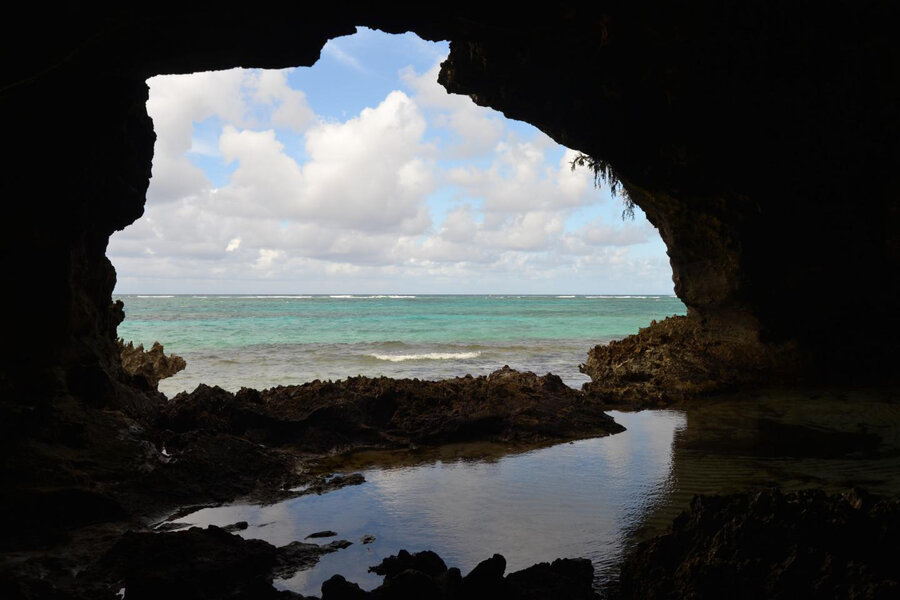Are humans a bigger threat than climate change?
Loading...
Seventy-five percent of Americans believe that global warming is a “very” or “somewhat” serious problem, even if they continue to debate whether human activity is to blame. But it turns out that other species may face an even greater threat than climate change: humans themselves.
In 2004, professional research diver Brian Kakuk managed to inspect a Bahaman sinkhole whose layer of toxic water had put off other explorers – but had perfectly preserved fossils of species now extinct on Great Abaco Island. Mr. Kakuk and his colleagues published their findings Monday in the journal Proceedings of the National Academy of Sciences.
The fossils, which included complete skeletons of crocodiles and tortoises, “gave us an unparalleled snapshot of what the Ice Age life would have been like on a Caribbean isle,” the study’s lead author, David Steadman, told the Los Angeles Times.
In a word, it was tough. Dramatic climate changes during the Pleistocene-Holocene transition, roughly 10,000 years ago, condensed the island to just one-tenth of its former size as glaciers melted, seas rose, and the local flora turned tropical. All around the globe, the end of the ice age set off a vast sweep of extinction: that’s when legendary species like wooly mammoths and giant sloths made their exit.
For years, scientists have debated whether that bout of global warming is responsible for the extinctions, or whether mankind also helped, as climate change let us venture out to new territory: crossing the Bering Strait to the Americas, for instance.
But people have only lived in the Bahamas for the last 1,000 years, giving University of Florida researchers an opportunity to compare the sinkhole’s oldest fossils, deposited before the big melt, with post-Ice Age bones, and those of animals that died after humans came to the island.
Scientists hoped that seeing which species made it from one era to the next, then the next – and why they lived or died out – would hold clues about how animals adapted to the changing climate, and then to humans, who altered the environment even more by hunting and clearing land for agriculture.
Of the 95 species studied, 39 are now extinct. Some 44 percent of the extinctions resulted from changes in climate and rising seas: perhaps because smaller populations forced inbreeding, Dr. Steadman suggests. But the majority adapted and were getting along just fine, until humans changed the game: the remaining 56 percent were wiped out in the last 1000 years.
A $375,000 National Science Foundation grant will now help the team determine whether genetic differences played a role helping some animals adjust to homo sapiens better than others.
It’s possible that the answer will help preserve biodiversity, as animals today again face the twin challenges of global warming and human activity, what University of Florida master’s student and co-author Hayley Singleton calls “the perfect storm.”
“If we’re losing that high of a percentage over a millennium, is anything going to be left by the time we get to the next ice age?” Steadman asked Live Science.








